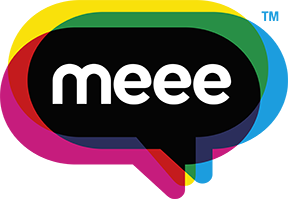Employee Wellbeing And Mental Health Benefits

What is mindfulness?
Mindfulness is a method used to purposely focus your attention on the present moment. It helps the person become more aware of their thoughts and feelings, so that they become better able to manage them, rather than being overwhelmed by them. Mindfulness techniques can be split into two main parts: awareness and acceptance. Awareness involves maintaining a moment-by-moment recognition of your thoughts, feelings, environment, and bodily sensations. Acceptance, which can be harder to attain, requires the individual to pay attention to their thoughts and feelings, but to remove all judgement from the situation. So, rather than worrying about the future or fixating on the past, mindfulness helps you to be focussed and ‘there’ in the present moment.
Mental health in the workplace
As people’s lives become increasingly non-stop and the separation between work and life more blurred, an “always-on” mentality can have negative effects on your employees and your business. As covered in our Mindfulness and Productivity blog, a culture of overwork can result in burnout, with the effects of longer office hours, commutes, and work at the weekends taking their toll on employees’ physical and mental wellbeing.
An Australian study conducted by Beyond Blue on the state of mental health and wellbeing in the workplace found that:
• One in five Australians (21%) have taken time off work in the past 12 months because they felt stressed, anxious, depressed or mentally unhealthy.
• Only 52% of employees believe their workplace is mentally healthy.
The benefits of mindfulness at work
The popularity of mindfulness in the workplace has grown hugely in recent years, with companies from Google to Nike, and even the NHS, implementing mindfulness training programmes for their employees. Aside from the benefits for productivity, research has also shown that mindfulness techniques can help staff better manage their mental health, stress and emotions in the workplace, leading to improved wellbeing.
Beyond Blue’s study found that:
• In workplaces that employees consider mentally healthy, self-reported absenteeism as a result of experiencing mental ill-health almost halves.
• Organisations that value mental health are likely to be more productive (72% agreement among employees, 71% agreement among leaders).
• Organisational leaders who focus on mental health in the workplace inspire respect among employees (65% agreement among employees).
Introducing mindfulness in your business
There are several ways you can introduce mindfulness into the workplace to improve the wellbeing of your employees.
1. Encourage mindful techniques at work
Introduce mindfulness knowledge and techniques throughout your business. If you have the funding and resources, consider offering training in mindfulness, and building it into management and development courses to benefit your employees at all levels.
If you don’t have the budget or resource for this, you can still introduce the concept of mindfulness and some exercises for your employees to try. It could be as simple as encouraging employees to take ten minutes at the start of the day for a breathing exercise before checking their emails. Breathing exercises not only increase the flow of oxygen to the brain (improving alertness and focus), but can also instil a sense of calm and purpose, creating a positive mindset for the day ahead.
2. Create a quiet space in the office
With the popularity of open plan offices unlikely to change any time soon, it’s a good idea to give your staff a quiet space to practice their mindfulness (or just to take a moment).
Of course, not every employee will want to sit on cushions and meditate, so why not simply create a quiet and ideally ‘tech-free’ zone in the workspace, where employees can focus without the distraction of office chatter and mobile devices? For some companies, the addition of greenery or indoor plants and calming, nature-based imagery in the office can prove beneficial - artwork of team successes can also work well and is a positive reminder of the business they choose to work for.
3. Make time for mindfulness
How often do you see your employees eating at their desks? When deadlines are looming and the pressure is on, it can be tempting for employees to stay chained to their computer. Encourage your employees to take regular breaks, including a proper lunch break. Studies have shown that regular breaks can improve the overall productivity of staff, and benefit their mental wellbeing. Try to make sure employees actually step away from their desks and go for a quick walk to re energise, carry out a breathing exercise or head to a quiet space in the office.
Ready to take the next step with Meee?
Download the ‘MyMeee’ app (available on iPhone/Apple or Android/Google), explore our books, listen to our 'Just Meee' podcasts and subscribe to our monthly newsletter, ‘Meee Moments’, for exclusive tips, inspiring stories, and updates to keep you on track with your journey!
At Meee, we’re dedicated to inspiring everyone, everywhere, every day to Find, Live, and Give their unique Magic. As Magic Makers, we have the power to transform ourselves, our organisations, and our communities. Together, we can build a better world. Join us on this journey and be part of the change. Just ask@meee.global


